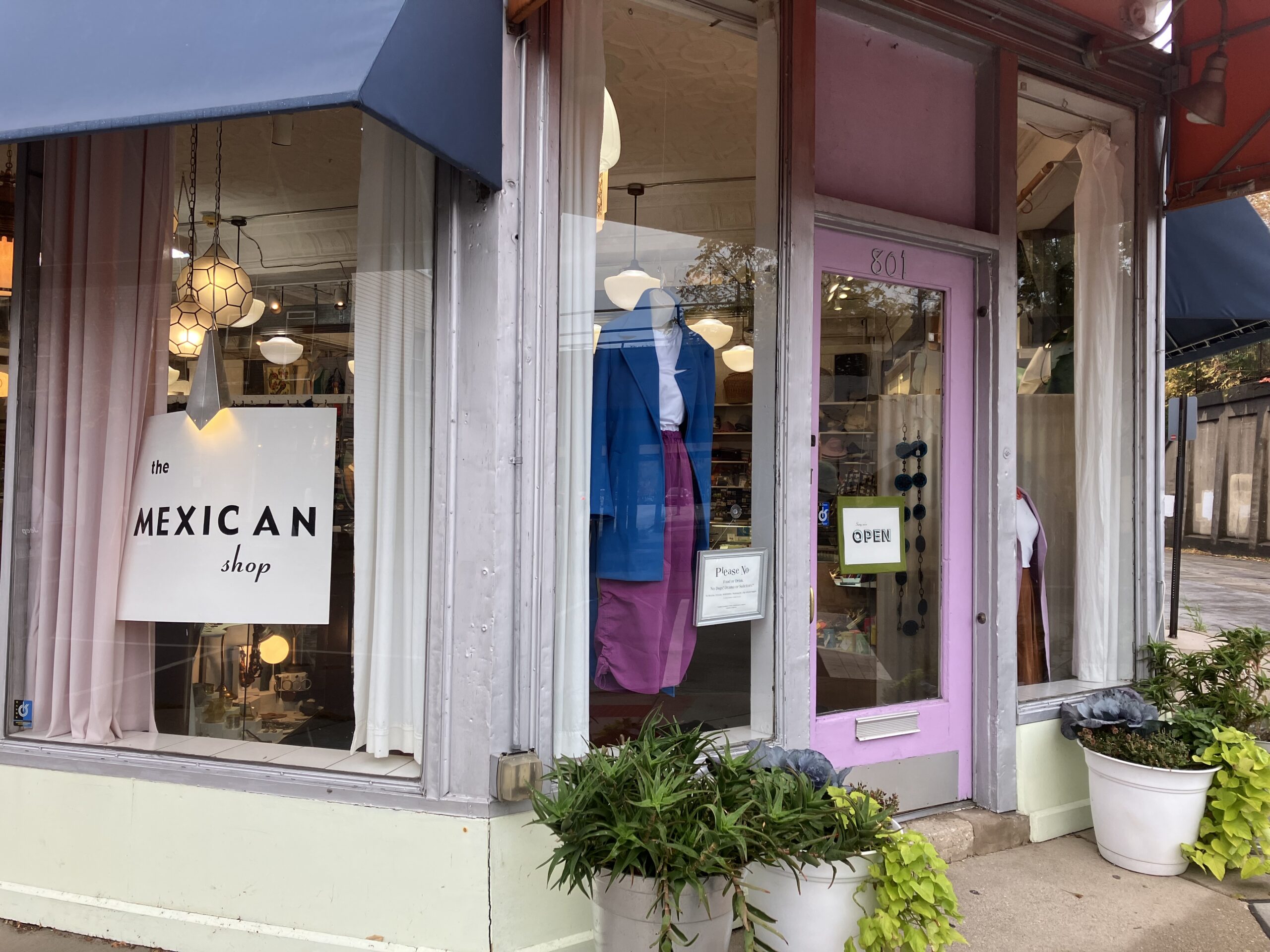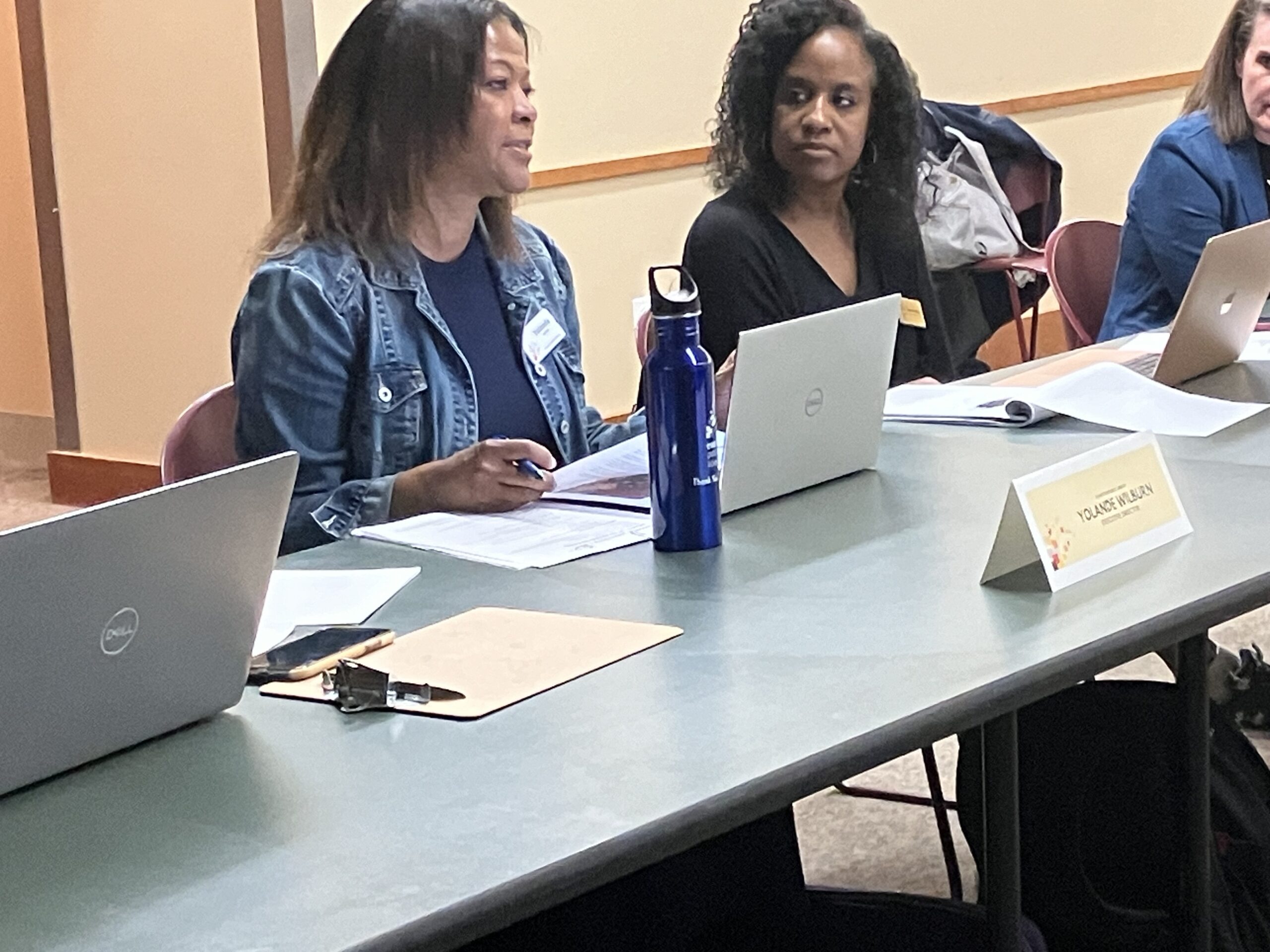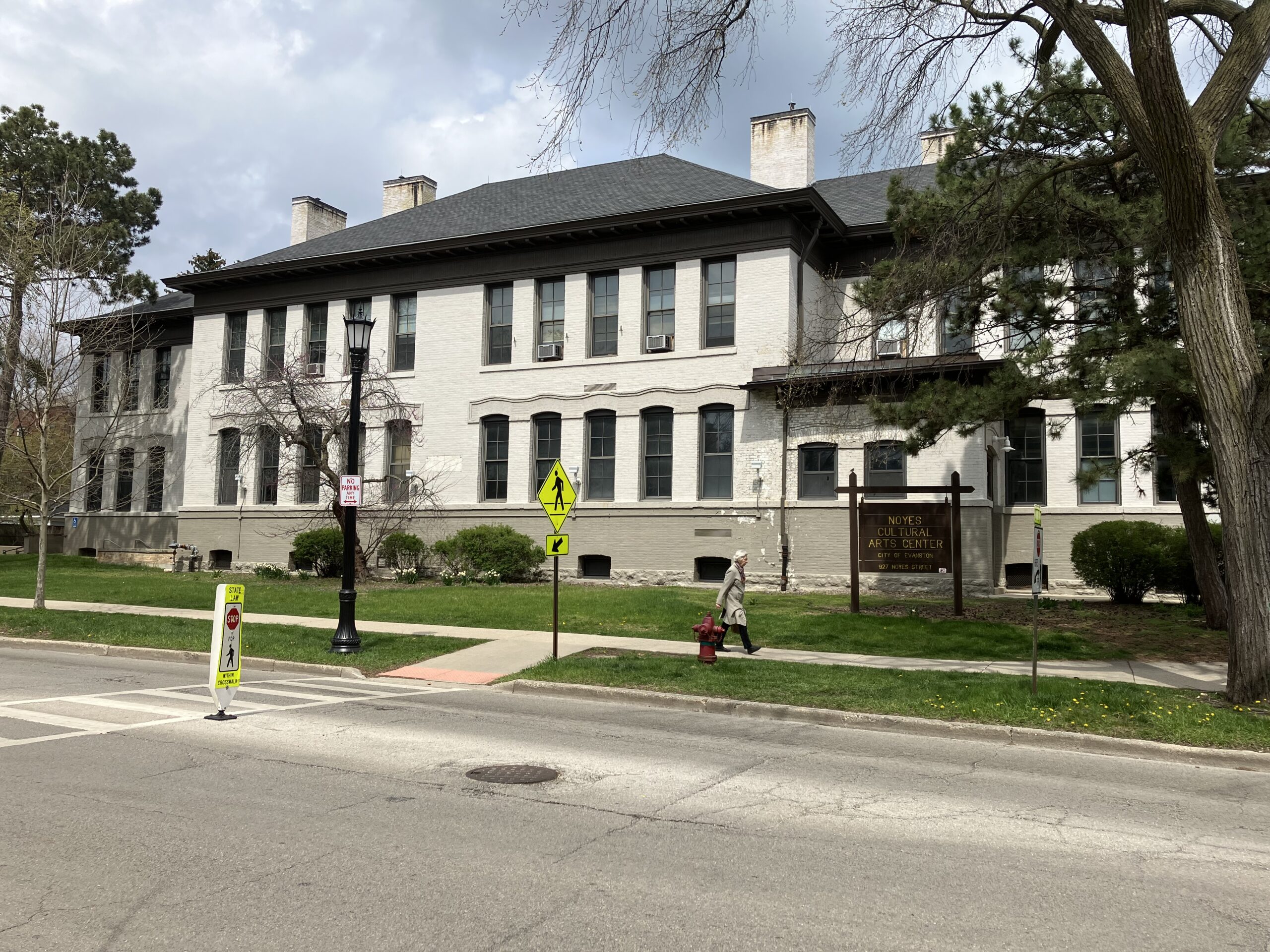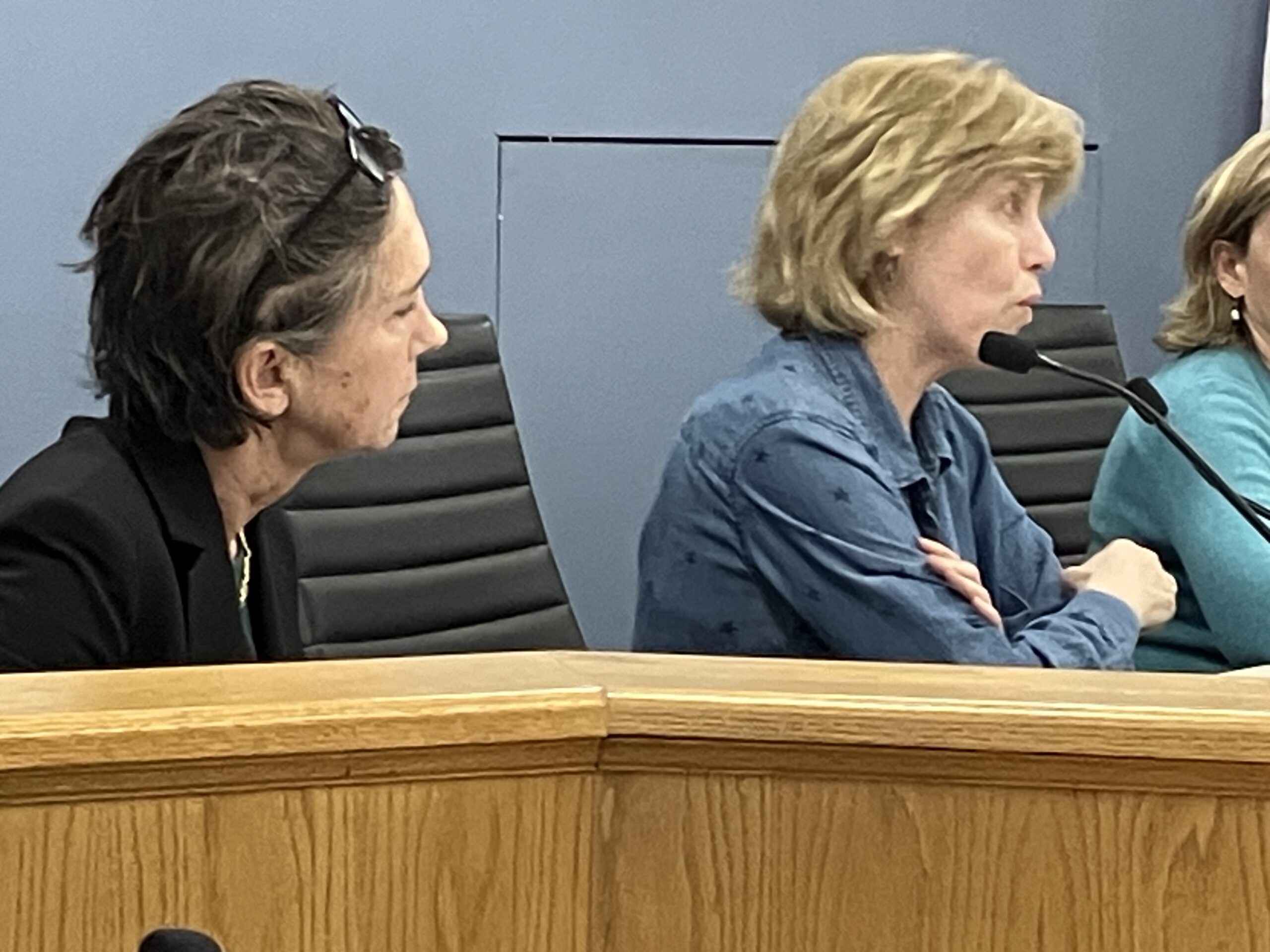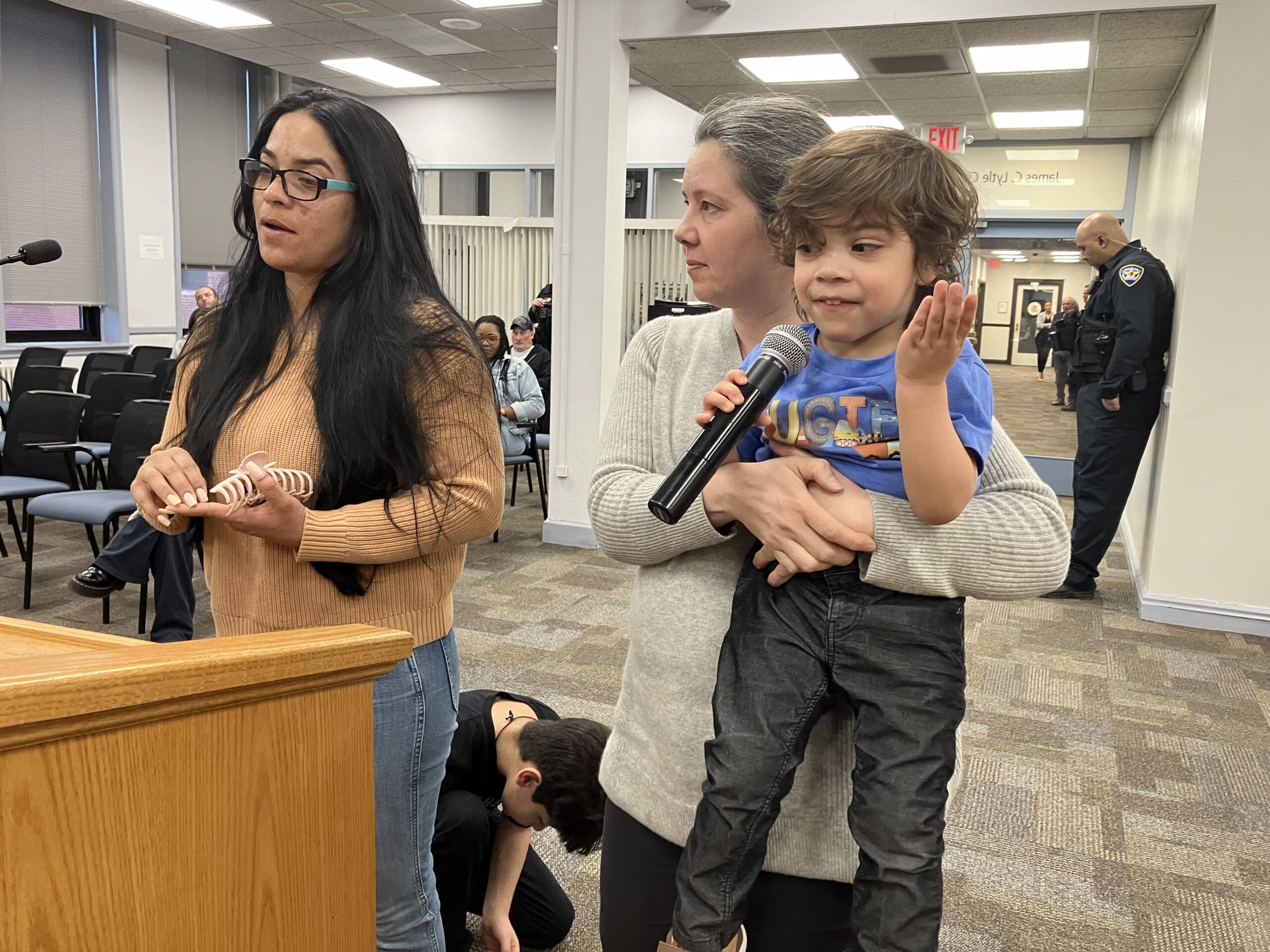By Bob Seidenberg
Evanston Economic Development Committee members are making full use of the city’s remaining federal COVID stimulus funds, designating them to help a number of initiatives growing out of the Evanston Thrives report on enhancing the city’s business districts.
Earlier this year, the City Council allotted the committee $3 million left over from the original $43.1 million in American Rescue Plan Act funds the city received, to be used on Evanston Thrives projects. Congress approved the ARPA in response to the COVID-19 pandemic.
At their Oct. 25 meeting, Evanston’s economic development committee members recommended a use for the largest chunk of that funding so far: $250,000 to directly help small businesses, some disproportionately affected during the pandemic.
The Mexican Shop, 801 Dempster St., may be one of the local small businesses that qualify for a new assistance program backed by the city’s Economic Development Committee Oct. 25. Credit: Bob Seidenberg
During the meeting, Council Member Clare Kelly (1st Ward), who proposed the program, expressed hope that with assistance, small businesses can do things like “reinvest in storefront improvements, reinvest in expanding and even beautifying their business,” ultimately “to really help them build more vibrancy.”
Kelly: Other cities target more for small businesses
Kelly quoted figures from a study indicating that other cities across the country invested between 6% and 15% of their ARPA money in small businesses, while in Evanston, “we have yet to allocate any portion per se,” she said.
She said that $500,000, though still not a lot compared to the total needed, “would certainly mean a lot to our small businesses to know we are thinking of them.”
Leading off discussion, Council Member Bobby Burns (5th Ward), said he would like to see the city stick as close as possible to its budget in that area, naming $250,000 as that figure, “especially because I don’t think we know what the true costs are.”
Council Member Devon Reid (8th), said he thought the overall proposal looked good. He said he would like to see more metrics, though, to understand “whether these investments are actually making a return and then what kind of return are we actually seeing.”
Jonathan Nieuwsma (4th Ward), said he was concerned about the program’s direct support of businesses. In 2015, a waffle restaurant on the city’s west side ended up closing after defaulting on a $200,000 loan.
“We’ve done some of this in the past,” Nieuwsma said, “and I think we need to be really careful about giving money to individual businesses because we don’t have an unlimited supply of money.”
Philosophically, he said, “I think our money is better spent in a way that benefits a broader number of businesses and the entire community rather than on individual businesses.”
Investing in growth a question mark
City employees are still determining what kind of process will be used to weigh requests, said Evanston Economic Development Manager Paul Zalmezak. He said officials plan to come back with a recommendation at the committee’s Dec. 6 meeting.
He said some kind of scoring system is under consideration, with equity and Climate Action Resilience Plan goals also layered into the process.
Committee member Angela Pennisi raised concerns about several of the criteria listed as a basis for considering direct grants.
One of her concerns was about including “outstanding debts for rent/mortgage, inventory, payroll or fixed expenses that were incurred during the pandemic” as a basis for consideration.
“I do not believe we can do due diligence in protecting the government’s money on that topic,” she told committee members.
Growth potential should be considered
Similarly, she had an issue with another point, next down on the list: “Growth (tools, tech, material, personnel, and other costs associated with business growth).”
She said that the city needs “to give resources to the businesses that have the foundations to grow. So to me, if you start investing in growth, but you don’t have the foundation to grow, then you’re going to be challenged to actually sustain that growth.”
Pennisi said she would be more comfortable substituting a term such as “capital improvements” rather than going with a broad term such as “growth.”
Council Member Clare Kelly said assistance to the city’s small businesses had been mainly left out of ARPA allocations until now. Credit: Bob Seidenberg
Committee members voted unanimously in favor of the $250,000, removing those points from the proposal.
After the vote, Kelly said her proposal grew out of the idea that “our local, small independent businesses are unique businesses that really bring other people to Evanston, make Evanston a wonderful place to live.”
Other cities across the country have invested a significantly larger portion of the ARPA funds they received in small businesses, she said.
The U.S. Treasury Department, which has issued rules on use of the funds, “wrote extensively about investing ARPA money in small businesses,” she said, “because it’s really sort of the heart of the communities.”
Murals and eyeballs
Also at the meeting, EDC members recommended allocating ARPA funds in several other areas, including a contract with Art Encounter to oversee the installation of three murals for an amount not to exceed $61,000. The murals are planned for three locations:
824 Noyes St. (apartment building with Stacked and Folded on the ground floor).
909 Davis St. (Metra ramp).
1723 Simpson St. (the Meals on Wheels building).
Murals were mentioned in the Evanston Thrives report as a way to highlight a business district through color and imagery.
Art Encounter is a nonprofit based at the Noyes Cultural Art Center. The mission of Art Encounter, which was founded in 1978, is “to educate, empower and connect people of all ages and backgrounds through interactive explorations of visual art,” according to a statement from the group. Art Encounter has activated 26 murals in the city’s nine wards since 2017, its proposal stated, and its program annually plans three to five murals on average for each coming year.
Joanna Pinsky, the group’s artistic director, told EDC members the organization had obtained partial funding for each of the murals and hoped the city funding would make up the rest.
“We don’t just go out looking for walls to paint,” she told committee members. “We look for partners to engage with, and so every year we receive requests from groups who want to help beautify their neighborhoods, tell stories that are important to the community. And currently at this time of the year, looking at the upcoming year 2024, we’re planting the seeds for projects and that of course includes securing enough funds to try and make the project happen.”
Murals will get a lot of ‘eyeballs’
Nieuwsma said he was excited that the murals would be located in business districts where they’ll get a lot of “eyeballs.”
He was especially enthusiastic about brightening up the area around the Metra ramp at 909 Davis St.
“I want to make sure that when Northlight Theatre [just down the block] opens up in a couple of years, that we do a much better job than we are currently welcoming visitors into town,” he said.
Reid said that if “the most eyeballs” is the main criteria, then Howard Street in his southern ward should be considered down the road. Howard Street “desperately needs some loving,” he said.
Burns also spoke in favor of the proposal, noting that in the case of the Meals on Wheels building, it didn’t come “out of thin air.” He said Pinsky had reached out to him a few months ago about the prospect.
He in turn referred the group to the city Arts Council, which gave Art Encounter a $1,000 grant.
The Arts Council also came up with the idea of promoting the history of Meals on Wheels, whose early supporters included restaurateur Hecky Powell, former Fifth Ward Council Member Delores Holmes and other prominent Evanstonians.
Committee members voted unanimously in support of the funding request for $61,000. The City Council has the ultimate authority to approve the funding.
Marketing and placemaking too
At the meeting, the committee also backed a request for $78,200 from All Together Studio, an all-woman, Evanston-based group, to implement a digital marketing and public realm marketing plan around the Evanston Thrives report. The report includes some 200 action steps to improve Evanston business districts.
Plus, members approved entering a sole-source contract with the same business for $41,280 to coordinate the logistics and management of Evanston Thrives placemaking infrastructure.
The report has made placemaking equipment, which can include such things as a stage, fire pits and Adirondack chairs, as key pieces for events highlighting the city’s different business districts.
n discussion, Nieuwsma said he completely agreed on the scope of work and was excited about getting started, but wondered whether the city could handle it in-house.
Burns spoke in support of moving forward with All Together Studio, headed by Rachael Aziz and Marisa Schulz, noting the business had already been doing work by helping the city get the program off the ground.
City will ‘need support’
After the city received the final report of Evanston Thrives, “one of my first thoughts was we’re going to need support to implement this,” Burns told committee members. “You know, between city staff being at capacity and this semi-volunteer committee [EDC], my thought was it was pretty obvious that we will need some support in certain areas to implement this effectively.”
On the need for a marketing plan, Aziz told the committee that their proposal outlines a plan for supporting city staff in implementing key recommendations from the Thrives plan, “really to get a lot of things off the ground so staff can continue moving them forward.
“I think that one of the key themes that we heard from the extensive engagement that we did through Thrives,” Aziz, participating remotely, told committee members, “is that there was no real one central hub to get information about businesses, about events that were going on. There’s a lot of different social channels and newsletters that are going out there – that creates a lot of confusion. And so when people go to the City of Evanston website, they land on the calendar, which showcases the council meetings or committee meetings, right? But there needs to be that central hub that really lifts up the stories of businesses and events that are going on.”
Committee members voted unanimously in favor of the communication and marketing plan consulting services, as well as Placemaking Kits coordination, in their recommendation to the City Council.
